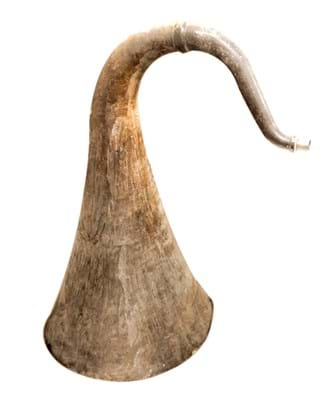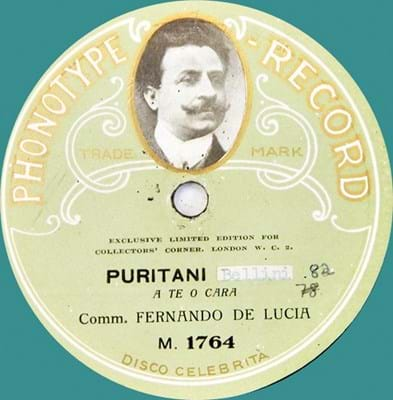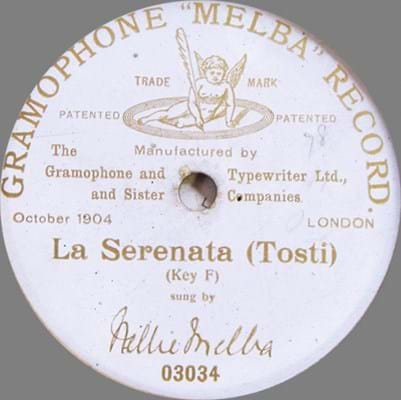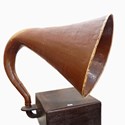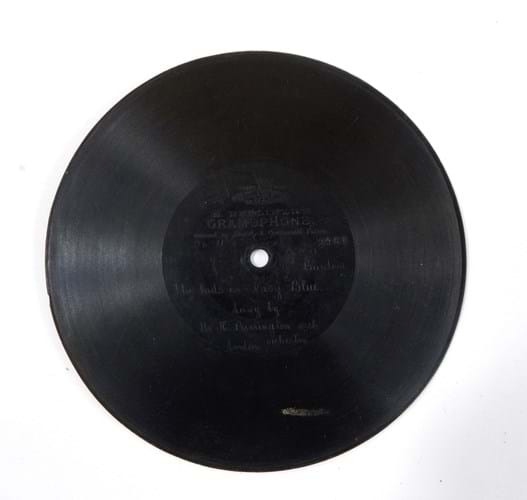These bewildering earliest steps in musical recordings appeared in the second half of the 19th century and eventually led to the vinyl records which dominated the scene for so long.
Vinyl has of course now achieved a high collecting status, but if you really want to impress your mates (or simply enjoy the sounds), then keep an eye on and an ear out for the Cotswold Auction Company sale in Cheltenham on June 6.
The saleroom is offering a “enormous” single-owner collection of some of the earliest records and also horn gramophones produced by EMG Handmade Gramophones Ltd, which was formed in in 1923 by Ellis Michael Ginn (hence the firm’s title).
It has been built up over 60 years and the collectors, Jack Lee and then Hugh Sheldon of Derbyshire, were probably well-known to their fellow enthusiasts, says the auction house. This large consignment comes from their estates and represents decades of keen collecting.
One particular feature of the sale is the collection of 7in Berliners – tiny records produced without labels and scratched with the name of singer, title and date, generally produced in the 1890s and early 1900s. Three of these by Burt Shepard are intriguingly titled Listen to My Tale of Woe, I Don’t Want to Play in Your Yard and Mary Was a Housemaid.
One unusual example among the Berliners is the ‘Puzzle Plate’ from 1901 which is a multi-track record, playing one of three tunes at random – presumably quite an advanced feature in music technology at this stage. This is estimated at £60-100.
Another rare item is a De Lucia Phonotype recording of Bellini’s Puritani, also estimated at £60-100.
Making a big noise
A Mark XB Oversize table-top gramophone by EMG Handmade Gramophones Limited, 11 Grape Street, Shaftesbury Avenue with chrome fittings and electric motor, in cross-banded oak case with a huge papier-mache gramophone horn, about 4ft 7in (1.4m), is estimated at £3000-4000.
In a book titled International History of the Recording Industry, it states: “The unique feature of the EMG was its huge horn, made with scientific precision, with a diameter at the mouth of over a metre. Each soundbox was tuned by hand. The motor that drove the turntable, however, was electric.”
A tabletop portable gramophone by EMG with a large papier-mache horn is estimated at £500-800.
EMG at auction
Several EMG gramophones have appeared at auction recently. For example, Isle of Wight saleroom Hose Rhodes Dickson sold an EMG mahogany cased gramophone with papier-mache horn, and ivorine label inscribed EMG Hand Made Gramophones, 267, High Holborn, London WC1, last September. The turntable was missing but it more than doubled the top estimate to sell at £850.
In May 2014 Richard Winterton Auctioneers took £2400 for an ‘early’ EMG gramophone described in the catalogue as having a ‘vast cardboard horn’, no less.
In February last year Special Auction Services took £2200 against an estimate of £1200-1800 for a Mark IX EMG horn gramophone. In September 2015 SAS also sold an EM Ginn Expert Senior gramophone with papier-appliqué horn for £3800 (estimate £2500-3500). The ‘Expert’ range was produced by Ginn after financial difficulties in 1929 forced him to relinquish control of the original EMG.


